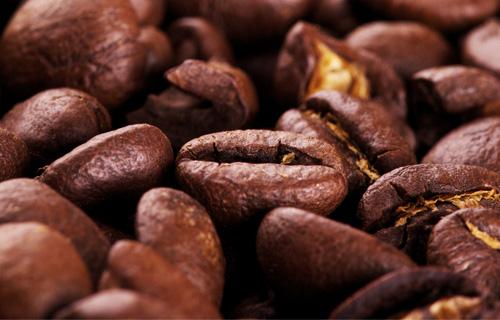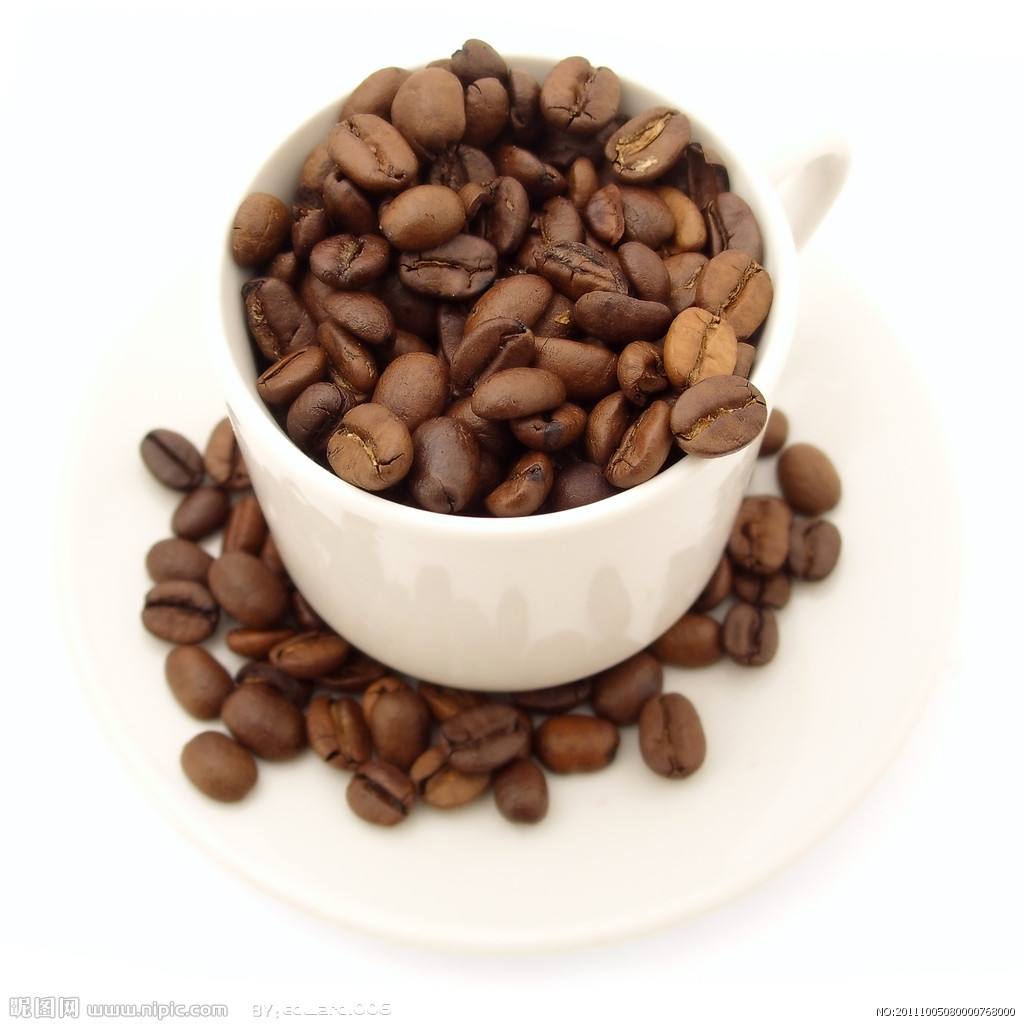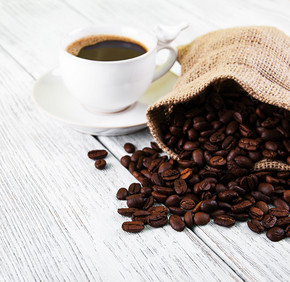Flavor atlas of Yunnan coffee
As we all know, raw beans have almost no other flavor except the smell of grass before baking, but their chemical components react in a series of ways during the baking process, forming the unique flavor of coffee. Coffee contains more than 800 volatile components, even if some ingredients are trace, can also play a role in the flavor. Dehong, Baoshan, Lincang and Pu'er in Yunnan Province are the main growing areas of small-grain coffee in China, with a planting area of more than 100000 hm2 and a total output of 120000 tons. There are few studies on coffee flavor in China, mainly focused on genetics and breeding, high-yield cultivation, pest control and so on. HS-SPME-GC/MS was used to detect moderately roasted beans in three regions of Yunnan (Pu'er, Baoshan, Lincang). The results showed that the content of furan was the highest, and the samples from different regions could be distinguished.
Through the use of precision instruments, academic experiments on coffee beans from four producing areas in Yunnan were carried out. The content of each kind of substance in coffee sample is expressed as the percentage of the sum of their respective peak area to the total peak area. According to the classification and analysis of volatile compounds in coffee, it is found that in shallow baking, furfural is the highest volatile substance in Pu'er, Lincang and Dehong samples, which are (17.39 ±0.35)%, (14.93 ±0.13)% and (12.30 ±0.22)%, respectively, while methylpyrazine is the highest in Baoshan coffee. (10.75 ±0.16)% In moderate baking samples, the content of furfuryl alcohol was the highest in Baoshan, Lincang and Dehong, which were (13.54 ±0.42)%, (12.28 ±0.25)% and (11.89 ±0.10)%, respectively, while in Pu'er moderate coffee, the content of 5-methylfuranal was the highest (14.01 ±0.28)%. The highest content of volatile compounds in deep-roasted coffee in Pu'er was furfuryl alcohol, which was (15.22 ±0.96)%, while that in Baoshan, Lincang and Dehong deep-roasted coffee was pyridine, which were (20.28 ±0.46)%, (17.85 ±0.20)% and (19.26 ±0.40)%, respectively. The results showed that the volatile compounds in coffee changed greatly with the increase of baking degree, such as the content of pyridine in Pu'er samples increased from 0.53% (shallow) to 16.34% (depth), while furans decreased from 43.28% (shallow) to 33.25% (depth).

The amount of furan in deep roasted coffee was more than that in shallow roasted coffee, which was similar to that in moderate roasted coffee. For example, the furfural content in Pu'er coffee decreased from (10.44 ±0.08)% (moderate) to (3.53 ±0.10)% (depth), and 5-methylfurfural content decreased from (14.01 ±0.28)% (moderate) to (2.77 ±0.06)% (depth). With the increase of roasting degree, the content of pyrazine decreased, especially when Baoshan and Dehong coffee changed from light roasting to moderate roasting. This is mainly because the contents of methyl-pyrazine, 2-dimethylpyrazine and 2-dimethylpyrazine in light coffee are higher than those in Pu'er and Lincang coffee.
With the increase of baking degree, the number of pyridine increased, but pyrrole did not change. in terms of compound content, pyridine compounds in coffee from four regions increased with the increase of baking degree, among which the increase of pyridine was the most obvious. for example, the content of Pu'er sample increased from (0.53 ±0.05)% (shallow baking) to (13.69 ±1.22)% (deep baking). The content of pyrrole compounds in coffee in four regions was the same, and changed little with the increase of baking degree.
The types of aldehydes and ketones in coffee in the four regions changed little. Under the condition of the same baking degree, the content of ketones was basically the same, and gradually decreased with the increase of baking degree. However, the content of aldehydes did not decrease with the increase of baking degree, but it was the highest in deep-baked samples, mainly due to the high content of 4-methylbenzaldehyde in deep-roasted coffee.
The content of phenols in deep-roasted coffee increased significantly in four areas, and phenols had a greater effect on the aroma of deep-roasted coffee than light and moderate coffee. Except Dehong coffee, the acid content of coffee in other areas decreased with the increase of roasting degree. According to the results of GC-MS, 2-furfuryl mercaptan was not detected, and the content of sulfides in the four regions was almost the same.
The experimental results show that the same roasting degree coffee can basically maintain a good correlation in the four regions, while the difference between different roasting degree coffee is more obvious. Compared with deep roasted coffee, the correlation between light roasted coffee and moderate roasted coffee is better.
The characteristic aroma of coffee is determined by different kinds and concentrations of volatile compounds, and the compounds that mainly contribute to the aroma of Arabica roasted coffee are polar substances. With the increase of roasting degree, the chemical components in coffee have a series of reactions such as Maillard and caramelization, resulting in changes in the type and content of volatile compounds in coffee.
Furan compounds are relatively high in coffee volatile substances, which are mainly characterized by scorched flavor and caramelized flavor, which are mainly due to the reaction of sugars and amino acids at high temperature. due to the high content of carbohydrates and amino acids in raw coffee beans, the content of furan substances is high. The results showed that the amount of furan in deep roasted coffee was more than that in shallow roasted coffee, which was similar to that in moderate roasted coffee. The furfural content in coffee decreased with the increase of roasting degree, which may be due to decomposition reaction or polymerization reaction. As the second largest volatile compounds in roasted coffee, pyrazines are mainly manifested as barbecue flavor and earthy flavor.
The results showed that with the increase of baking degree, there was little change in the quantity and type of pyrazines. Pyridine and pyrrole compounds are mainly smoked and charred, but because of their high threshold, they make little contribution to the aroma of coffee. The results of this study showed that pyridine compounds in coffee from four regions increased with the increase of roasting degree. Aldehydes and ketones usually have high contents in moderate baking, but slightly decrease in deep baking due to degradation, in which aldehydes and 2meme 3-pentanedione are the key aroma substances that contribute to the flavor of coffee cream. The results of this study showed that the aldehydes and ketones in coffee changed little in four regions.
Phenols, as a kind of volatile compounds in coffee, are mainly formed by the degradation of quinic acid groups. The results showed that the content of phenols in deep-roasted coffee increased significantly in four areas, mainly due to the great increase in the contents of guaiacol, phenol and 4-ethyl-2-methoxyphenol. Guaiacol and 4-ethyl-2-methoxyphenol contributed greatly to the aroma, especially guaiacol was regarded as a key aroma substance in coffee. Carboxylic acids such as acetic acid, propionic acid and 3-methyl butyric acid mainly affect the sour taste of coffee. As an important aroma substance in coffee, sulfur-containing volatiles mainly affect the roasting taste of coffee [23]. So it usually exists in trace form in coffee (less than 0.01% of the total volatile matter), but plays an important role in freshly roasted coffee, in which 2-furfuryl mercaptan because of its low threshold. It is 0.05 ppb (air), so it makes a great contribution to the aroma of coffee. There was little difference in the content of sulfides in the four regions, and 2-furfuryl mercaptan was not detected. Furanones also contribute greatly to the aroma of coffee, and 2pyrone 5-dimethyl-4-hydroxy-3 (2H)-furanone is the most common key aroma compound.
According to the load diagram, all kinds of volatile compounds which contribute greatly to the aroma of coffee with different roasting degrees in four regions can be found. Pyrazines can be used as the judgment quota to distinguish between Baoshan shallow coffee and Dehong shallow coffee. Acids and furanones are highly correlated with Lincang shallow coffee, while Pu'er shallow roasted coffee has a high correlation with ketones and furans. The moderate roasted coffee was basically the same in the four regions, and the related volatile compounds were furans. In deep roasted coffee, Baoshan, Lincang and Dehong are similar, the volatile compounds with high correlation are phenols, pyridines and sulfides, while the volatile compounds with high correlation with Pu'er deep roasted coffee are pyrrolids. the above volatile compounds can basically be used as the basis for distinguishing coffee beans from different regions and different roasting degrees.
At present, more than 800 volatile components have been detected in coffee. However, volatility is only the most basic requirement for a substance to contribute to the aroma of coffee. Not all volatile components are aroma substances. As an aroma substance in coffee, it must exceed a certain concentration in the air and react with receptors in the nasal cavity before it can be felt. For example, the high content of methylpyrazine with the smell of burning grass has a high threshold, so its contribution to the overall aroma of coffee is very limited. In addition, high percentages of volatile substances such as furfuryl alcohol and pyridine also had little effect on the aroma of coffee, while some volatile compounds with low percentage content, such as 4-ethyl-methoxyphenol and 2min 5-dimethyl-4-hydroxy-3 (2H) furanone, had great effects on the aroma of coffee. In this study, 21 of them were selected as the judgment quota according to the volatile substances detected by GC-MS. Through the PCA analysis of the classified volatile compounds, it was found that the volatile compounds could be used as the judgment quota for distinguishing different roasted coffee from four regions. Pyrazines had a good correlation with the shallow samples of Baoshan and Dehong, acids, furanones and Lincang shallow samples, while Pu'er shallow samples had a high correlation with ketones and furans. Baoshan, Lincang and Dehong deep coffee are similar, phenols, pyridines and sulfides are the main ones with high correlation, while Pu'er deep coffee has high correlation with pyrrole. The PCA analysis results of the main aroma substances are different from the above results, mainly because the characteristic aroma of coffee is caused by a few aroma substances, and with the increase of roasting degree, the aroma difference of coffee with the same roasting degree in the four regions is also increasing.
In this study, samples from four producing areas were also analyzed by electronic tongue. Electronic tongue is a kind of modern analysis instrument which imitates the taste mechanism of human body. The information of the sample liquid is obtained by the taste sensor array, and the output signal of the sensor is processed by the multivariate data analysis method to realize the sample analysis. Electronic tongue can not analyze the micro-components of the sample microscopically, but reflects the overall flavor characteristics of the sample, and has the advantages of objectivity, rapidity, accuracy and good reproducibility. Through the electronic tongue experiment, it can further clarify the differences between roasted coffee in four regions. According to the PCA results of the electronic tongue experiment, we can see that the roasted coffee in the four regions has a good differentiation, especially in Pu'er and Dehong coffee, while Baoshan coffee and Lincang coffee are close to each other. For the coffee with the same roasting degree, the deep coffee in the four regions was significantly different from the light and moderate coffee, while the moderate and light coffee were close, and the difference between Dehong light coffee and moderate coffee was the smallest. The difference between Baoshan light coffee, moderate coffee and Lincang light coffee and moderate coffee is also relatively small.
Important Notice :
前街咖啡 FrontStreet Coffee has moved to new addredd:
FrontStreet Coffee Address: 315,Donghua East Road,GuangZhou
Tel:020 38364473
- Prev

Yemeni mocha coffee: slightly sour and then strong
Follow the comments (Wechat official account vdailycom) found that the beautiful cafe opened a small shop of its own. Although Ethiopia was the first country in the world to discover coffee, Yemen was the first country in the world to produce coffee on a large scale as a crop. In the 17th century, the first batch of Yemeni coffee was exported to Europe through the ancient port of Mocha. This is Mocha.
- Next

Description of the Flavor of Yunnan Iron Card Fine Coffee beans
Following caf é (Wechat official account vdailycom) found that Beautiful Cafe opened its own shop Yunnan small Grain Coffee Variety Typica: the oldest native variety in Ethiopia and southeastern Sudan, all Arabica is derived from Tibica. The flavor is elegant, but the physique is weak, the disease resistance is poor, the fruit yield is less. The Blue Mountains of Jamaica,
Related
- Detailed explanation of Jadeite planting Land in Panamanian Jadeite Manor introduction to the grading system of Jadeite competitive bidding, Red bid, Green bid and Rose Summer
- Story of Coffee planting in Brenka region of Costa Rica Stonehenge Manor anaerobic heavy honey treatment of flavor mouth
- What's on the barrel of Blue Mountain Coffee beans?
- Can American coffee also pull flowers? How to use hot American style to pull out a good-looking pattern?
- Can you make a cold extract with coffee beans? What is the right proportion for cold-extracted coffee formula?
- Indonesian PWN Gold Mandrine Coffee Origin Features Flavor How to Chong? Mandolin coffee is American.
- A brief introduction to the flavor characteristics of Brazilian yellow bourbon coffee beans
- What is the effect of different water quality on the flavor of cold-extracted coffee? What kind of water is best for brewing coffee?
- Why do you think of Rose Summer whenever you mention Panamanian coffee?
- Introduction to the characteristics of authentic blue mountain coffee bean producing areas? What is the CIB Coffee Authority in Jamaica?

